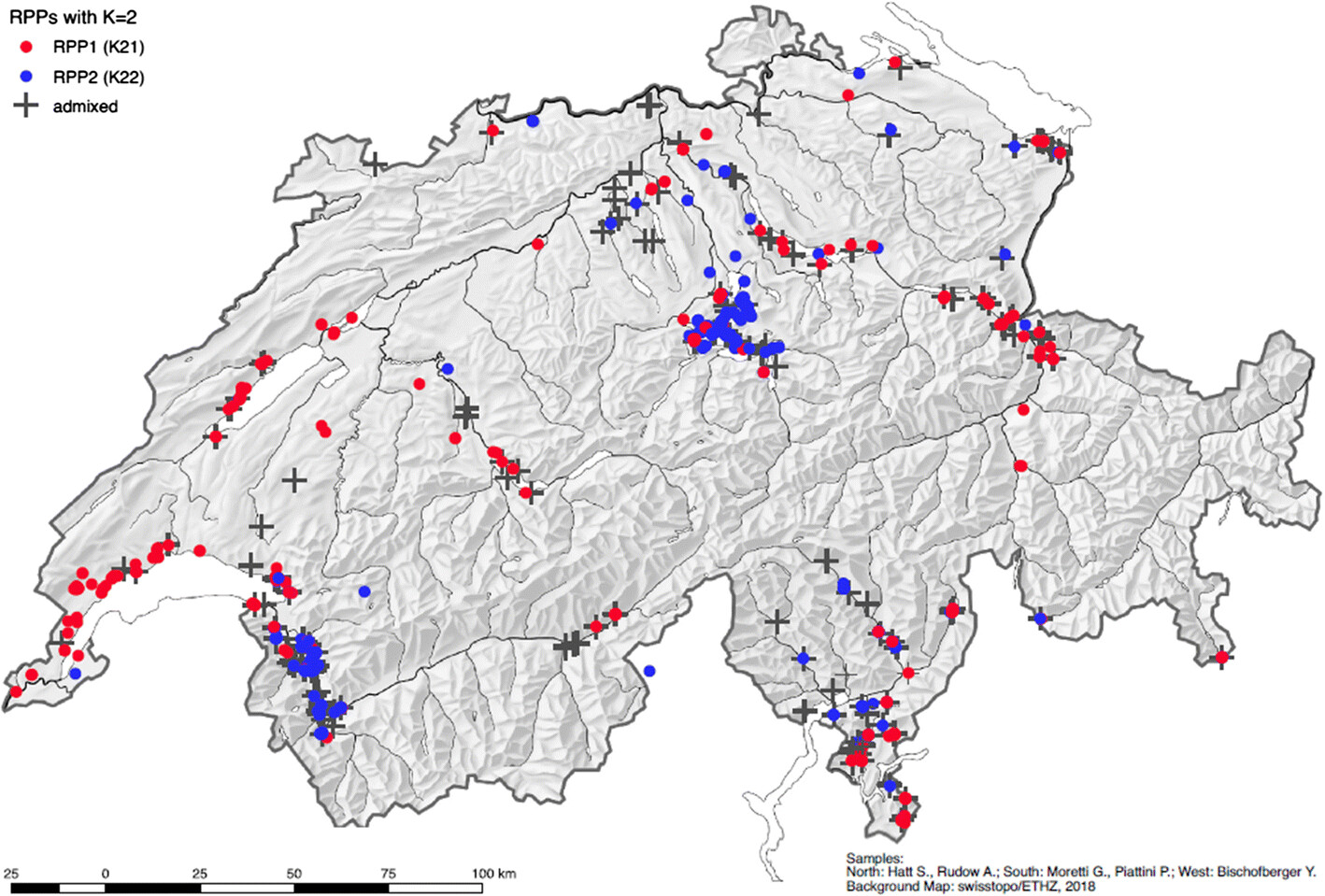Genetically valuable: Sweet chestnuts in Switzerland
- D-USYS
- Institute of Terrestrial Ecosystems
The Swiss chestnut forests are home to a genetic diversity that is unique in Europe. Many chestnut forests consist of grafted trees combined with very old varieties. This is shown by a study of a consortium of various Swiss and European research groups in collaboration with ETH Zurich.

In Switzerland, pure and mixed chestnut forests cover an area of around 24,000 hectares - the same area as the Canton of Zug. For environmental and historical reasons, most of these still existing forests are located in the Swiss southern Alps. But also in the north of the Alps, there are still larger remnants of the former chestnut culture, as well as smaller presences of sweet chestnut spread over the whole of the Swiss Plateau. Their low public profile is due to the fact that chestnut cultivation and the knowledge associated with it declined sharply with the cooling of the climate during the so-called Little Ice Age in the 17th and 18th centuries.
A cultural asset that has fallen into oblivion
Over the last thirty years, many efforts have been made to preserve and give new life to the remaining chestnut varieties. In Switzerland, within the framework of the "National Action Plan for the Conservation and Sustainable Use of Plant Genetic Resources for Food and Agriculture" (NAP-RPGREL) of the Federal Office for Agriculture, more than 10,000 old chestnut trees have been identified with obvious signs of grafting and other evidence of cultivation.
Tracking down old cultivars
In the final phase of this project, a research consortium genetically characterised 962 chestnut trees. Trees that represent the greatest genetic diversity are to be protected by a conservation programme. The analysis not only revealed a great genetic diversity in the varieties still present in chestnut groves in Switzerland, but also unique genetic features not found in the rest of Europe. The results were published in the journal "Biodiversity and Conservation".
"In Switzerland, the chestnut culture had largely been abandoned and was therefore hardly affected by the industrialisation of agriculture," explains Andreas Rudow, scientist at the Institute for Terrestrial Ecosystems at ETH Zurich. "That's why there is still a great deal of genetic information from a medieval phase of chestnut cultivation."
Ensuring genetic diversity
On the basis of the data collected, it is now possible to safeguard the valuable genetic information in special conservation plantations and to keep it accessible for the further use of old varieties as well as for breeding projects. For German-speaking Switzerland, a first conservation collection already exists in Küssnacht am Rigi; the necessary reinsurance in the form of a collection of duplicates is planned in Zurich.
The project involved the association Castanicoltori della Svizzera Italiana, the Swiss Federal Institute for Forest, Snow and Landscape Research WSL and EcoControl for the southern side of the Alps; the Haute Ecole Spécialisé de Suisse Occidentale in Geneva and In Situ Vivo for French-speaking Switzerland, as well as the Swiss Federal Institute of Technology Zurich and MOGLI solutions for German-speaking Switzerland. The group worked with the University of Santiago de Compostela in Spain and INRA Bordeaux in France. The genetic study was financed by the Swiss Federal Office for Agriculture (FOAG).
